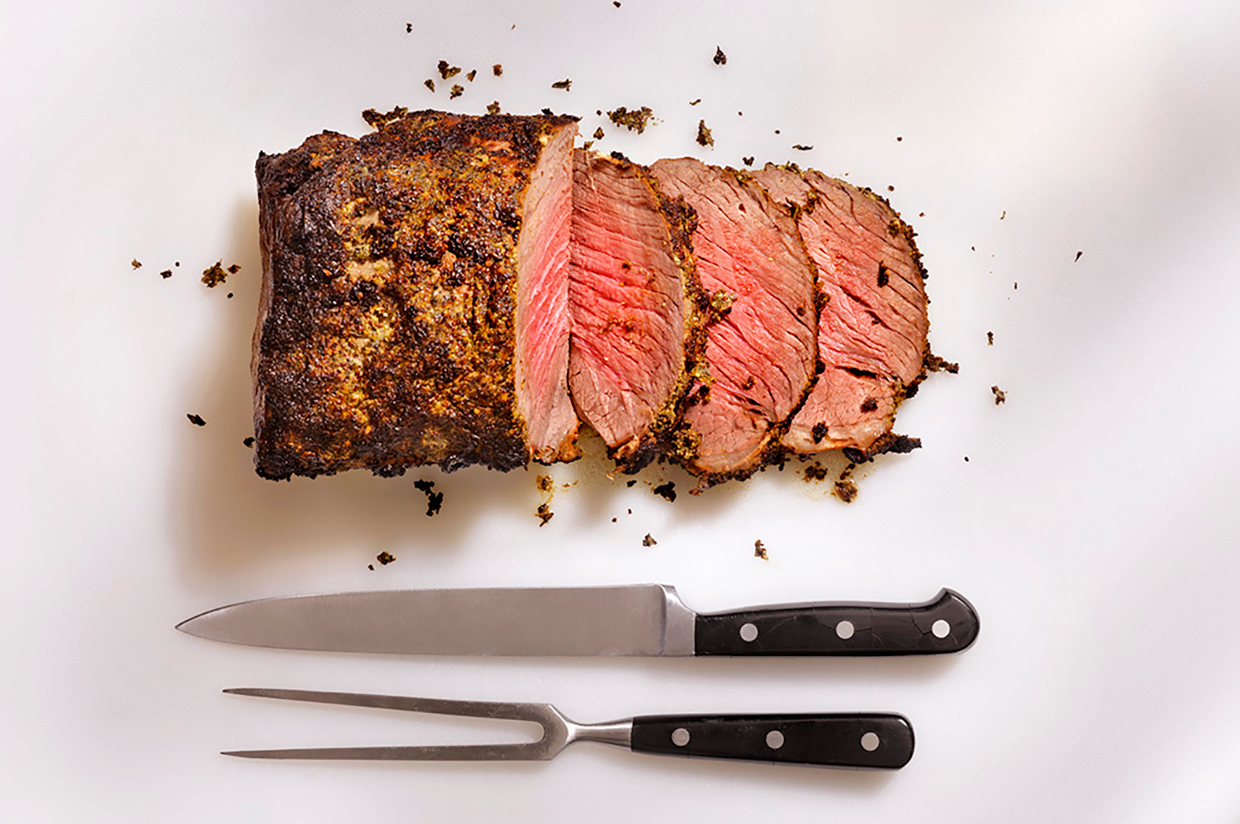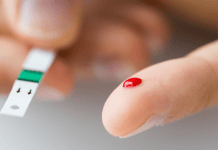Iron deficiency is more common in Canada than we thought
Iron deficiency is the most common nutrient deficiency in the world. According to the World Health Organization, it is the only nutrient deficiency that remains prevalent in industrialized countries today.1 Iron was already a nutrient of concern in Canada2—that’s why it’s one of three nutrients included on the Nutrition Facts table on food products (the others are potassium and calcium).3 But new research shows that rates of iron deficiency are even higher than previously reported.
Using improved analysis methods, researchers at Health Canada updated estimates of iron deficiency, based on data from the Canadian Health Measures Survey 2012–2019. They published their findings in The Journal of Nutrition in May 2023. Based on the results, Health Canada identified iron deficiency as a public health concern of “moderate magnitude” among premenopausal women.
Why iron matters
Iron is needed to carry oxygen throughout our body and brain, so it’s easy to see how it’s vital for our health. Correcting low iron levels can take months, which is why these higher rates of estimated iron deficiency are concerning.
You might be familiar with the short-term health impacts of low iron. These can include fatigue, headaches, irritability, brain fog (forgetfulness, fuzzy thinking), trouble with focusing, muscle pain during exercise and difficulty with finishing workouts.5 These symptoms are disruptive enough for children, teens and adults alike, but low iron can have more serious, longer-term effects as well, such as a rapid heart rate, restless leg syndrome, dizziness, shortness of breath and weakened immunity.5,6 Low iron has also been linked to sleep disorders7 and mental illnesses, including depression and anxiety.6,8
Women need more iron during pregnancy
Adequate iron is especially important for women who are pregnant or planning to become pregnant. In fact, iron is so important for a healthy pregnancy that iron needs increase by 50%.9
Iron deficiency during pregnancy can have a devastating impact on babies and young children, including a higher likelihood of premature birth and irreversible developmental delays.10
Many women of child-bearing age have low iron—29%, according to Health Canada’s new estimates.11 So perhaps it’s not surprising that in a study of more than 44,000 pregnancies in Ontario over a period of five years, more than half were affected by low iron, according to a retrospective study published in the journal Blood Advances in November 2021.12
Good to know: Canadian research has found that eating red meat like beef is the strongest dietary predictor associated with better iron status in women.13 That’s likely because red meat like beef is not only a top source of iron, but the iron it contains (heme iron) is far better absorbed by the body than non-heme iron from eggs and plant sources like lentils, tofu and enriched pasta (though these can also be important sources of iron in the diet).14 In addition, adding meat (or poultry or fish) to a meal will boost the iron absorbed from non-heme iron by a whopping 150%.15
Concerned about iron?
If you think you or someone you care for has low iron, talk to your health care provider. Find out more.
References
- Micronutrients. Centers for Disease Control and Prevention. 2021. https://www.cdc.gov/nutrition/micronutrient-malnutrition/index.html
- Health Canada’s proposed changes to the core nutrients declared in the Canadian Nutrition Facts table. Health Canada. 2014. https://www.canada.ca/en/health-canada/services/food-nutrition/public-involvement-partnerships/technical-consultation-proposed-changes-core-nutrients-declared-canadian-nutrition-facts-table/consultation.html
- Information within the Nutrition Facts table: Mandatory Information. Canadian Food Inspection Agency. 2021. https://inspection.canada.ca/food-labels/labelling/industry/nutrition-labelling/nutrition-facts-table/eng/1389198568400/1389198597278?chap=0
- Cooper M, Bertinato J, Ennis JK et al. Population Iron Status in Canada: Results from the Canadian Health Measures Survey 2012–2019. J Nutr. 2023 May;153(5):1534–43. https://doi.org/10.1016/j.tjnut.2023.03.012. https://pubmed.ncbi.nlm.nih.gov/36918146/
- Iron Deficiency Anemia. HealthLink BC. November 29, 2021. https://www.healthlinkbc.ca/healthy-eating-physical-activity/conditions/anemia/iron-deficiency-anemia
- Iron Deficiency – Diagnosis and Management. Government of British Columbia. April 17, 2019. https://www2.gov.bc.ca/gov/content/health/practitioner-professional-resources/bc-guidelines/iron-deficiency#signs-symptoms
- Leung W, Singh I, McWilliams S et al. Iron deficiency and sleep – A scoping review. Sleep Med Rev. 2020 Jun;51:101274. doi: 10.1016/j.smrv.2020.101274. Epub 2020 Feb 8. PMID: 32224451. https://pubmed.ncbi.nlm.nih.gov/32224451/
- Lee HS, Chao HH, Huang WT et al. Psychiatric disorders risk in patients with iron deficiency anemia and association with iron supplementation medications: a nationwide database analysis. BMC Psychiatry 20, 216 (2020). https://doi.org/10.1186/s12888-020-02621-0. https://bmcpsychiatry.biomedcentral.com/articles/10.1186/s12888-020-02621-0
- Dietary references intakes tables. Health Canada. Sept 2022. https://www.canada.ca/en/health-canada/services/food-nutrition/healthy-eating/dietary-reference-intakes/tables.html
- Georgieff MK. Iron deficiency in pregnancy. Am J Obstet Gynecol. 2020 Oct;223(4):516–24. doi: 10.1016/j.ajog.2020.03.006. Epub 2020 Mar 14. PMID: 32184147; PMCID: PMC7492370. https://www.ncbi.nlm.nih.gov/pmc/articles/PMC7492370/
- Cooper M, Bertinato J, Ennis JK et al. Population Iron Status in Canada: Results from the Canadian Health Measures Survey 2012–2019. J Nutr. 2023 May;153(5):1534–43. https://doi.org/10.1016/j.tjnut.2023.03.012. https://pubmed.ncbi.nlm.nih.gov/36918146/
- Teichman J, Nisenbaum R, Lausman A et al. Suboptimal iron deficiency screening in pregnancy and the impact of socioeconomic status in a high-resource setting. Blood Adv. 2021 Nov 23;5(22):4666–73. doi: 10.1182/bloodadvances.2021004352. PMID: 34459878; PMCID: PMC8759118. https://pubmed.ncbi.nlm.nih.gov/34459878/
- Chang VC, Cotterchio M, Kotsopoulos J et al. Iron Status and Associated Factors among Canadian Women: Results from the Canadian Health Measures Survey. J Nutr. 2023 Mar;153(3):781–97. doi: 10.1016/j.tjnut.2022.10.011. Epub 2022 Dec 20. PMID: 36788041. https://www.ncbi.nlm.nih.gov/pmc/articles/PMC7492370/
- Gulec S, Anderson GJ, Collins JF. Mechanistic and regulatory aspects of intestinal iron absorption. Am J Physiol Gastrointest Liver Physiol. 2014 Aug 15;307(4):G397-409. doi: 10.1152/ajpgi.00348.2013. Epub 2014 Jul 3. PMID: 24994858; PMCID: PMC4137115.
- Engelmann MD, Davidsson L, Sandström B et al. The influence of meat on nonheme iron absorption in infants. Pediatr Res. 1998 Jun;43(6):768-73. doi: 10.1203/00006450-199806000-00009. PMID: 9621986. https://pubmed.ncbi.nlm.nih.gov/9621986/






